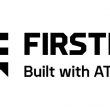xG Technology makes tangible strides
After two years of questioning from an engineering community skeptical about its claims of a technological breakthrough, Florida-based vendor xG Technology has installed its first commercial network and appears to be on the verge of inking deals with multiple partners worldwide.
Using xG Technology's patented xMAX system, ISP Far Reach Technologies has deployed base stations in Volusia County, Fla., and is scheduled to begin selling mobile voice-over-IP (VoIP) services to customers beginning this month.
“That should be the magical time everybody's been waiting for — commercial-grade handsets together with commercial base stations operating on a network in customers' hands,” said Rick Mooers, xG Technology CEO.
Indeed, the first several hundred handsets were scheduled for delivery to Far Reach Technologies by the end of June for a beta trial, with a full commercial launch expected in August, said Russ White, Far Reach Technologies CEO.
“Everything is performing as planned, if not better,” White said of his company's internal tests of the xMAX system, with all of the network's base stations deployed. “We're happy with what we've got, so far.”
Many wireless-industry observers doubted an xMAX network would ever be deployed commercially when xG Technology emerged from stealth mode two years ago, boasting that its Flash Signal technology would enable communications signals to be transmitted greater distances using less power compared with traditional technologies. Skeptics scoffed at some of the company's technical claims, but the deployment of the Far Reach Technologies commercial network should answer most questions, Mooers said.
“The technology has proved to be everything we want — there really isn't any technical risk anymore and hasn't been since last September, when we got down to a chip,” he said. “All we're doing is taking that chip and putting it in our first vertical application, which happens to be base stations and handsets for mobile VoIP.”
Mobile VoIP will not be the only application offered on an xMAX network, Mooers said. At the end of the third quarter, Far Reach Technologies plans to offer data services via xG Technology's smartphone devices and desktop modems. By the end of next year, xG Technology expects to be the first vendor to offer wireless broadband services that meet the IEEE's 4G standards.
But the most impressive feature of xMAX is that the system — fueled by an efficient receiver that ignores non-xMAX signals — provides better-than-cellular coverage while meeting the FCC's low-power requirements for operating in the unlicensed ISM band at 900 MHz. Not having to secure spectrum at auction — a process that requires billions of dollars for a nationwide rollout in the U.S. — and the relatively low costs of deploying an xMAX network revolutionize the economics of wireless service, Mooers said.
In tests, xG Technology has demonstrated that its technology can use remarkably little energy to transmit a wireless broadband signal from an 850-foot television tower over a radius of 18 miles, providing coverage over 1000 square miles, Mooers said. Replicating that nationwide would require 3500 base stations to cover the 3.5 million square miles in the U.S., he said.
“Each of those 3500 base stations is a $2700 cost to us — it's not what we sell it for, we sell it for $50,000, which is competitive with anybody else, especially given that you need a lot fewer of them [to cover the same area],” Mooers said. “At 3500 base stations — this is just an example, not our business model — to light up the U.S., times $2700, that's roughly $10 million.”
Mooers emphasized that capacity issues likely would dictate that more than 3500 base stations would be needed for a nationwide rollout. But letting capacity — and revenues — drive wireless-network buildouts is more sensible from a business perspective than the models used in the industry today, he said.
“We can light up areas for very low cost and then let the profits drive the growth — not spend billions of dollars and hope that we can differentiate ourselves somehow in the commoditized service we're offering,” Mooers said. “There are a lot of ‘Field of Dreams’ syndromes out there, where people spend billions and hope [customers will] come. This is not that scenario.”
It's a business case that has attracted attention outside the U.S., as well. In March, international telecom giant Telefonica began pursuing negotiations with xG Technology to roll out wireless broadband services in Mexico, where the incumbent wireline and wireless companies led by tycoon Carlos Slim have dominated the competitive landscape (MRT, April, page 16).
“In a monopolistic market like Mexico, the only real way to compete is to not touch the [public network] — and it needs to be a low-cost way,” Mooers said. “The most valuable thing about xG is not the technology itself, it's what we're doing with it — it's the low-cost, economic model that we put it in. That's the most disruptive thing.”
As of press time, Telefonica had not announced a deal with xG Technology, as Mooers indicated that the carrier is continuing to conduct its due diligence.
In June, xG Technology announced an exclusive territory trial agreement with Gama Ticaret ve Turizm, a member of the Gama Group infrastructure group, to roll out a 4G network in Turkey. Media reports indicate a similar deal was reached earlier this year with U.K.-based National Grid Wireless, an infrastructure group that has been sold to Arqiva — a unit of the Australian Macquarie Bank — for almost $5 billion in a deal still awaiting regulatory approval.
In addition to establishing relationships with service providers and infrastructure companies, xG Technology is seeking to partner with a major equipment manufacturer that has the resources to build equipment fast enough to meet whatever market demand develops, Mooers said.
“That part will be outsourced, hopefully by the end of the year, to an equipment partner,” he said. “Think about how fast we can roll it out when we do that.”
Once the Far Reach network proves to be commercially operational, xG Technology again will negotiate with service providers on territorial agreements for other parts of the U.S., Mooers said.
“We get calls all the time … but we have nothing to gain to do a deal while people are saying, ‘Let's wait and see when the [Far Reach] network is up,’” Mooers said. “Let it be up, and then we can talk about what those markets are worth. If you don't have to pay for spectrum and you can use this low-cost equipment, what's that market worth? What's New York City worth? Why would we sell that now?”
For new entrants like Far Reach Technologies, xMAX may be the only way to provide mobile service, given the prohibitive cost of spectrum, White said.
“It gives us the ability to break down any monopoly/duopoly/triopoly — or whatever you want to call it — get in [the mobile market] at a cost-effective rate and provide a superior service,” he said.
IN SEARCH OF PARTNERS
| Type | Progress to date |
|---|---|
| Service provider | Deploying a mobile VoIP network with Far Reach Communications. Announced territory agreement with Telefonica to negotiate a network deployment in Mexico. |
| Infrastructure | Announced territory agreement with Turkish infrastructure company Gama Ticaret ve Turizm A.S. Reportedly has a similar deal with National Wireless in the U.K. |
| Equipment vendor | Has a VoIP handset vendor in China. Plans to partner with at least one large gear-maker by the end of 2007. |
| Souece: xG Technology | |
















